Chopta Tungnath Trek: Winter Adventure Guide 2025
Published on May 24, 2025
Chopta Tungnath Trek in winter is a bold adventure for those who crave snow-covered trails, sharp mountain air, and the silence of high-altitude wilderness. The path winds through pine forests and open meadows before reaching Tungnath, the highest Shiva temple in the world. Climbing further to Chandrashila summit offers a 360-degree view of mighty Himalayan peaks like Nanda Devi and Trishul—an unforgettable reward after a challenging ascent.
Winter adds a layer of difficulty and beauty to this already iconic trail. The roads are quieter, the landscapes are frozen in time, and every step feels more personal. Ideal for trekkers who prefer less crowded routes, this season turns Chopta into a white canvas waiting to be explored. In this 2025 winter adventure guide, you’ll find everything you need—weather tips, gear advice, safety info, and route details—to prepare for one of the most scenic winter treks in Uttarakhand.
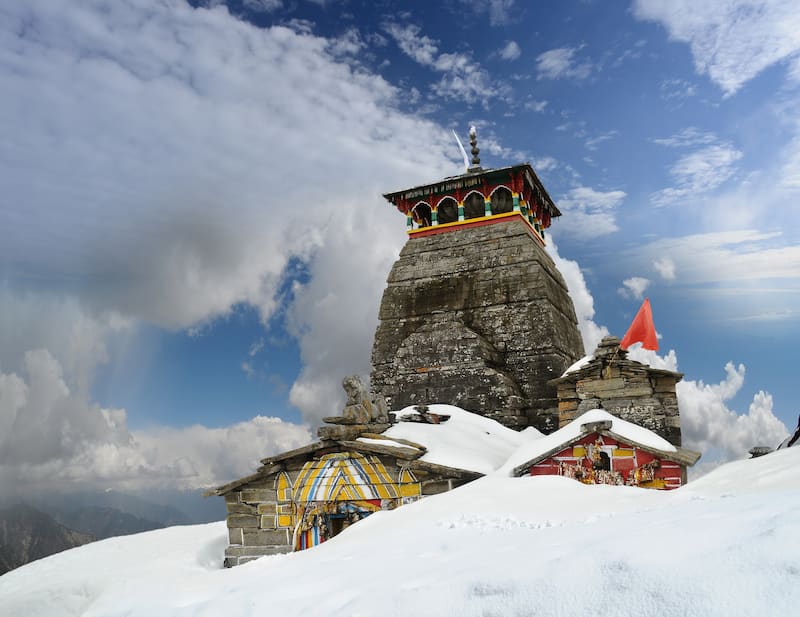
Chopta Tungnath Trek Winter Itinerary 2025: Day-by-Day Plan
Day 0: Delhi to Rishikesh to Sari Village
- Departure: Start your journey from Botanical Garden Metro Station at 10:00 PM.
- Overnight Journey: Travel overnight towards Sari Village via Rishikesh.
- Stop at Devprayag: Witness the mesmerizing confluence of the Bhagirathi and Alaknanda rivers along the way.
Day 1: Sari Village to Deoriatal
- Arrival at Sari Village: Check into your homestay and take some time to freshen up.
- Trek to Deoriatal: Begin your trek to Deoriatal (2.5 km, approximately 1.5–2 hours).
- Enjoy Deoriatal: Soak in the serene beauty of the lake and the surrounding landscapes.
- Return to Sari Village: Head back to Sari Village and enjoy a peaceful evening.
Day 2: Sari Village to Tungnath & Chandrashila
- Breakfast: Start your day with a hearty breakfast at your homestay.
- Drive to Chopta: A scenic drive of about 1 hour from Sari Village.
- Trek to Tungnath Temple: Embark on a 3.5 km trek to the sacred Tungnath Temple.
- Summit Chandrashila: Extend your trek by 1.5 km to reach the breathtaking Chandrashila summit.
- Return to Chopta/Sari: After the trek, return to Chopta or Sari for an overnight stay at the campsite.
Day 3: Chopta to Delhi
- Breakfast: Enjoy an early breakfast at your campsite in Chopta.
- Departure: Begin your journey back to Delhi in the early morning.
- Visit Dhari Devi Temple: Stop by the revered Dhari Devi Temple en route.
- Arrival in Delhi: A long drive of approximately 10–12 hours marks the end of your adventure.
Inclusion
- One Night Accommodation In Sari Village.
- One Night Accommodation In Chopta/Sari Village.
- 4 Meals Will Be Provided Throughtout The Trip.
- AC Transportation.
- Guide While trekking.
- Experienced Trip Captain Throught The Trip.
Exclusion
- 5% GST
- Extra Drinks, Food, Tea and Snacks.
- Tickets for any sightseeing or extra activity outside the camp area.
- Travel Insurance and other benefits.
- Anything which is not mentioned in inclusions.
- Cost escalation due to any unforeseen reason like weather, road condition landslide etc.
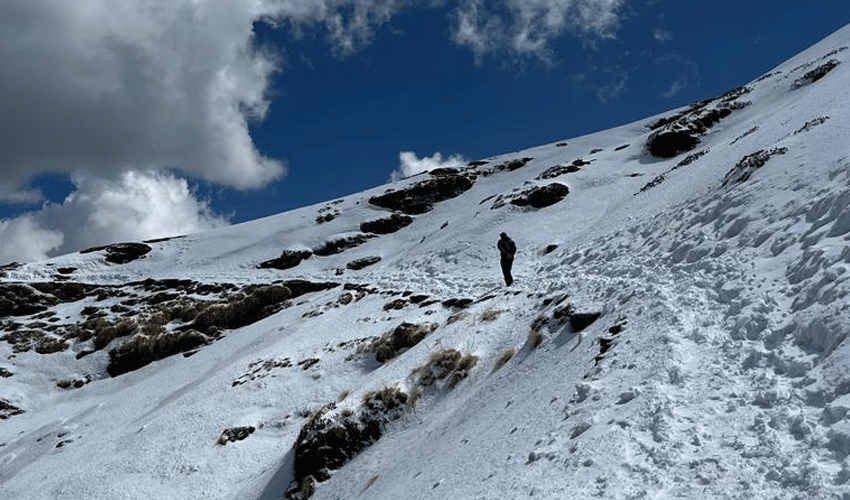
Why Choose Chopta Tungnath Trek in Winter?
The Chopta Tungnath trek in winter offers an unmatched Himalayan experience that blends solitude, snow-covered beauty, and spiritual depth. As the rest of Uttarakhand cools down, Chopta transforms into a serene white wonderland, making it one of the most magical and less crowded treks of the season.
What makes this trek truly special in winter is its perfect balance of challenge and accessibility. The snow-laden trails leading to Tungnath Temple trek are quiet and peaceful, allowing you to connect deeply with nature. Walking through thick forests of oak and deodar, with every tree blanketed in snow, feels like entering a completely different world. For photographers and nature lovers, the visuals are breathtaking—sharp ridgelines, frozen pathways, and panoramic views of snow-capped Himalayan giants like Chaukhamba and Nanda Devi.
Reaching Tungnath, the world’s highest Shiva temple, during winter feels even more rewarding. The ancient stone temple, half-buried in snow, radiates a calm and powerful energy. For many, the spiritual experience here is intensified by the silence and purity that winter brings. From Tungnath, the final climb to Chandrashila offers a 360-degree view of Himalayan peaks—an unforgettable sight in the clear winter sky.
Unlike peak-season treks, winter in Chopta sees fewer tourists, making the entire journey more peaceful and personal. It’s ideal for those who seek a quiet retreat or want to test their limits in cold, rugged conditions.
Whether you're planning your first snow trek or looking to explore new trails, the Chopta Tungnath trek in winter stands out for its scenic charm, spiritual touch, and raw adventure. The Tungnath Temple trek is not just a route—it's an experience that stays with you long after you've descended.

Ideal Time for the Winter Trek in 2025
Planning the Tungnath Temple trek or the Chandrashila summit trek in winter requires choosing the right time to ensure safety, clear views, and a rewarding experience. In 2025, the best time to undertake this high-altitude winter adventure falls between late December and mid-February.
During this period, Chopta receives fresh snowfall, transforming the entire region into a breathtaking white landscape. The trails to Tungnath and Chandrashila are covered in snow, offering a true winter trekking experience. However, weather conditions can vary sharply, so understanding the seasonal pattern is essential.
-
Late December to January: This is the peak winter season. Snowfall is frequent, and temperatures can drop to -10°C at night. The Tungnath Temple trek during this time is more challenging due to deep snow, but the beauty is unmatched. Make sure to carry proper winter gear, and only experienced trekkers or guided groups should attempt the Chandrashila summit trek during this phase.
-
Early to Mid-February: The snow starts to settle, and weather becomes slightly more stable. This is a great time for those who want to experience snow without facing extreme conditions. Trails become slightly more accessible, and the views from Chandrashila summit are often clearer under the bright winter sun.
Avoid planning the trek during early December or after late February, as conditions can be unpredictable—either too dry or too slippery as snow begins to melt.
In all cases, keep track of local weather updates and road conditions before heading out. With the right planning, trekking to Tungnath Temple and Chandrashila in winter 2025 will be a once-in-a-lifetime experience filled with snowy trails, spiritual calm, and epic Himalayan views.

Chopta to Tungnath to Chandrashila: Route Overview
The Tungnath Chandrashila trek from Delhi is one of the most scenic and spiritually enriching Himalayan trails. Starting from Delhi, this trek takes you deep into the Garhwal region of Uttarakhand, combining a peaceful road journey with a rewarding high-altitude hike. Here's a detailed breakdown of the route and distance you’ll cover:
Delhi to Chopta (Approx. 450–470 km)
Your journey begins with a road trip from Delhi to Chopta via Rishikesh, Devprayag, Rudraprayag, and Ukhimath. It usually takes around 12–14 hours by car or tempo traveler. Most Chopta Tungnath trek from Delhi packages include an overnight stay en route, typically in Sari village or Ukhimath, to help you acclimatize before the climb.
Chopta to Tungnath (3.5 km trek one way)
The trekking trail begins from Chopta at an altitude of around 2,680 meters. From here, the well-paved but snow-covered path leads you gradually uphill to Tungnath Temple, located at 3,680 meters. This 3.5 km stretch takes about 2 to 3 hours depending on your pace and snow conditions. The trail is moderately steep but manageable, offering stunning views of snow-covered forests and meadows.
Tungnath to Chandrashila Summit (1.5 km one way)
From Tungnath, the Chopta Chandrashila trek from Delhi continues for another 1.5 km to reach Chandrashila Peak, standing tall at 4,000 meters. This section is steeper and more challenging, especially in winter, but the 360-degree views from the summit—featuring Nanda Devi, Kedarnath, Chaukhamba, and Trishul—are absolutely worth the effort.
In total, the trek from Chopta to Chandrashila and back covers about 10 km (round trip). Whether you're after spiritual fulfillment or panoramic mountain vistas, the Chopta Tungnath trek from Delhi delivers both with unforgettable charm.
Weather & Trail Conditions in Winter
Winter transforms Chopta into a snow-covered paradise, making it a top choice for adventure seekers booking the Chopta Tungnath trek package or the Chopta Chandrashila trek package. However, trekking during this season comes with its own set of weather challenges and trail conditions that you should be fully prepared for.
From late December to mid-February, Chopta experiences heavy snowfall. Snow depth can range from a few inches in early winter to 2–3 feet in peak January, especially near Tungnath and Chandrashila. Trails often become slippery and require snow gear like microspikes or gaiters. Despite the difficulty, the scenery—frozen forests, white meadows, and snow-capped peaks—makes every step worth it.
Temperature ranges during winter are quite extreme.
-
Daytime temperatures hover between 0°C to 5°C.
-
Night temperatures can drop as low as -10°C, especially in Chopta and higher camps.
-
Wind chill at Chandrashila summit makes it feel even colder, so layering is essential.
Sunlight hours are short, with foggy mornings and clear afternoons being the norm. Start early in the day to ensure a safe return before sunset. Visibility is usually good in the daytime, and you’ll be rewarded with crystal-clear views of Himalayan peaks on a clear day.
Most Chopta Chandrashila trek packages include local guides familiar with winter terrain. They help ensure a safer trek and guide you through snow-covered sections where the trail may not be clearly visible.
If you're choosing a Chopta Tungnath trek package for the winter season, make sure it includes proper acclimatization, winter-ready accommodation, and emergency support. With the right planning, trekking through the icy trails of Chopta becomes a beautiful and unforgettable winter journey.

What to Pack: Essential Winter Trekking Gear
Packing the right gear is absolutely crucial for a safe and enjoyable winter trek to Chopta, Tungnath, and Chandrashila. Cold temperatures, snow-covered trails, and limited facilities mean you must be well-prepared for every condition the Himalayas throw your way. Here's a complete breakdown of what you should carry for the Chopta Tungnath winter trek:
1. Clothing (Layering is Key)
-
Base Layer (thermal innerwear): Retains body heat.
-
Mid Layer (fleece or down jacket): Provides insulation.
-
Outer Layer (waterproof/windproof jacket): Shields against wind and snow.
-
Trekking Pants: Preferably quick-dry and thermal-lined.
-
Waterproof Pants (optional): For deep snow or heavy snowfalls.
-
Woolen Cap + Balaclava or Neck Warmer: To protect head and face.
-
Gloves: One woolen inner and one waterproof outer pair.
-
Woolen Socks (2-3 pairs): Thick and warm; avoid cotton.
2. Footwear
-
High-ankle Trekking Shoes (waterproof): Ensure strong grip and ankle support.
-
Gaiters: Prevent snow from entering your shoes.
-
Microspikes or Crampons: For better grip on icy sections.
3. Accessories & Essentials
-
Backpack (30–40 L): Comfortable with rain cover.
-
Daypack (optional): For summit day or shorter hikes.
-
Trekking Poles: Helps with balance on slippery trails.
-
UV Sunglasses: Protects from snow blindness.
-
Sunscreen & Lip Balm: SPF 30+ to avoid sunburn.
-
Water Bottles/Thermos: Stay hydrated; warm liquids help.
-
Power Bank & Headlamp: Electricity is limited in winter.
-
Basic First-Aid Kit + Personal Medications: Include altitude sickness tablets.
4. Optional but Useful
-
Energy Bars/Dry Fruits: Quick energy boost.
-
Rain Poncho: In case of sudden snowfall.
-
Hand/Body Warmers: Useful during extreme cold nights.
Proper preparation makes all the difference. Having the right gear ensures that your winter adventure is not just beautiful—but also safe, warm, and unforgettable.
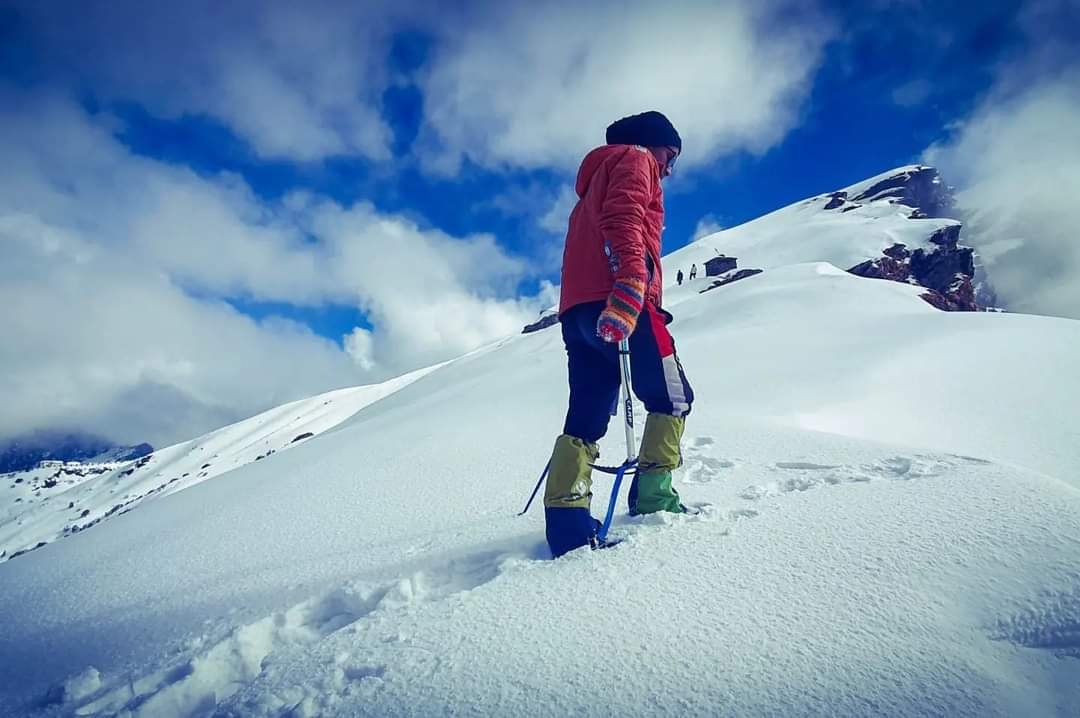
Accommodation Options in Chopta During Winter
When planning your Chopta tour package from Delhi, understanding the winter accommodation options is essential for both comfort and safety. While Chopta becomes a snowy paradise during the colder months, facilities are more limited than in peak seasons. Still, trekkers on the Chopta Tungnath trek or Chopta Chandrashila trek can find cozy and functional places to stay with proper planning.
1. Campsites
In winter, some adventure operators offer snow camping for those seeking an immersive Himalayan experience. These camps are set up in sheltered areas near Chopta, equipped with insulated tents, thick sleeping bags, and floor mats. While temperatures drop significantly at night (often below -5°C), well-managed camps include bonfires, warm meals, and hot water on request. This is ideal for trekkers who want to enjoy the thrill of staying amidst snow.
Note: Not all camps are operational in peak snowfall (January), so confirm availability in advance when booking your Chopta tour package from Delhi.
2. Guesthouses and Homestays
For those looking for more comfort and warmth, guesthouses and homestays in nearby villages like Duggalbitta, Baniyakund, and Ukhimath are good choices. These places offer basic but comfortable rooms with blankets, traditional wood-fired heating (bukharis), and home-cooked meals. While electricity and mobile signals may be limited, the hospitality makes up for the rustic setup.
Most Chopta Chandrashila trek itineraries in winter include accommodation in guesthouses, as they provide shelter from extreme weather and easier access to local support.
3. Facilities to Expect
-
Hot water may be limited—usually supplied in buckets.
-
Rooms are generally non-heated, but extra blankets are provided.
-
Food is simple—rice, dal, roti, vegetables, and tea.
-
Power cuts are common; carry a headlamp or torch.
Whether you choose snowy tents or warm village rooms, winter stays in Chopta are raw, real, and unforgettable—adding charm to every Chopta Tungnath trek experience.
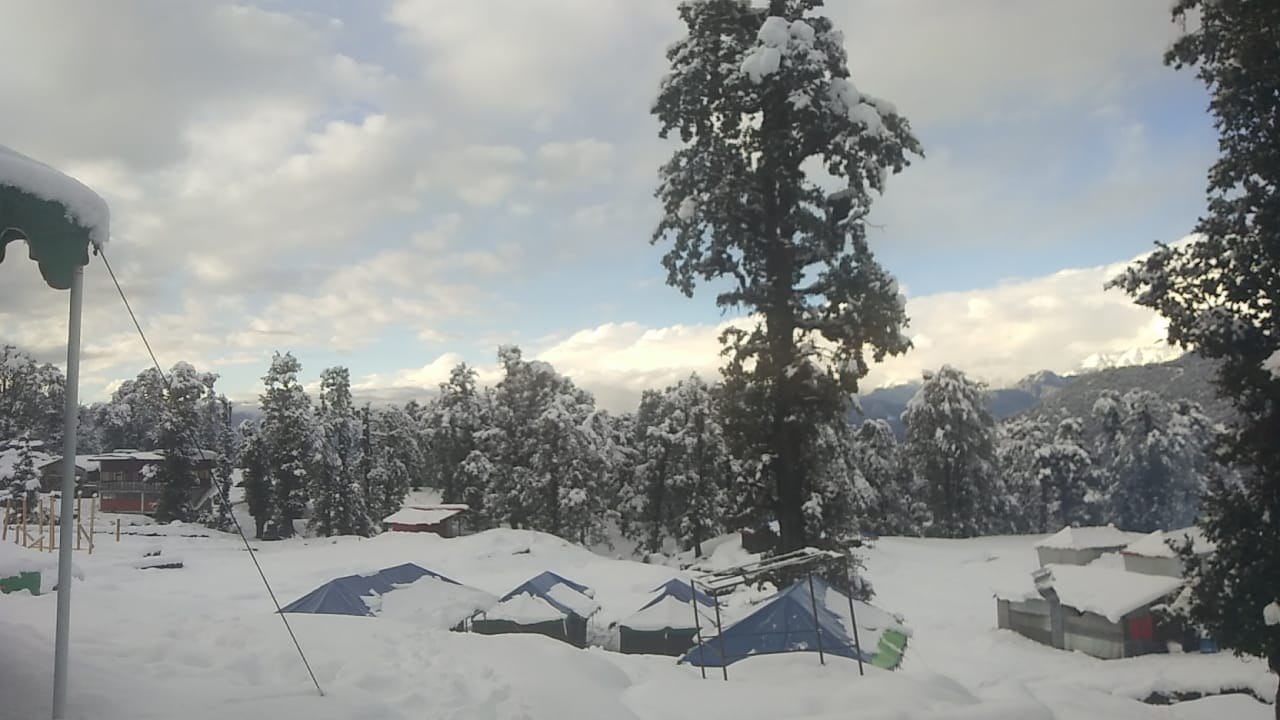
Safety Tips for a Winter Trek to Tungnath & Chandrashila
Trekking to Tungnath and Chandrashila in winter is a breathtaking experience, but it demands serious preparation and awareness. Snow-covered trails, freezing temperatures, and high altitudes present unique challenges. Follow these essential safety tips to ensure your Chopta Tungnath trek or Chopta Chandrashila trek is memorable for all the right reasons.
1. Be Prepared for Snow Trekking
-
Always check the weather forecast before starting your trek. Avoid venturing out during active snowfall or after recent heavy snow.
-
Use microspikes or crampons for better traction on icy trails.
-
Trek with gaiters to prevent snow from entering your shoes.
-
Start your trek early in the morning to return before dusk, as temperatures drop rapidly after sunset.
2. Preventing & Managing Altitude Sickness
-
Though Chopta and Tungnath aren’t extremely high-altitude zones, some may feel mild symptoms of altitude sickness around 3,500–4,000 meters.
-
Acclimatize properly—spend a night in Chopta or nearby villages like Sari or Duggalbitta before the trek.
-
Drink plenty of water, avoid alcohol, and ascend gradually.
-
Keep basic medication like Diamox (only after medical advice) and ORS packets handy.
3. Hire Local Guides
-
Always trek with experienced local guides, especially in winter when trails may be hidden under snow.
-
Guides not only navigate better but also help in emergencies and provide support during tricky ascents.
-
Most Chopta Tungnath trek packages include trained guides with knowledge of the region and weather patterns.
4. Emergency Contacts & Rescue Readiness
-
Keep contacts for local police, forest departments, and your travel operator saved in both phone and paper.
-
Inform someone at your homestay or basecamp about your trek route and estimated return time.
-
In case of severe emergencies, guides often coordinate with state disaster response teams (SDRF), who operate in parts of Uttarakhand.
-
Carry a charged power bank, torch/headlamp, and extra batteries.
Proper gear, smart decisions, and local support can make your winter Chopta Chandrashila trek a safe and unforgettable experience. Always respect the mountains and be ready for sudden weather changes.
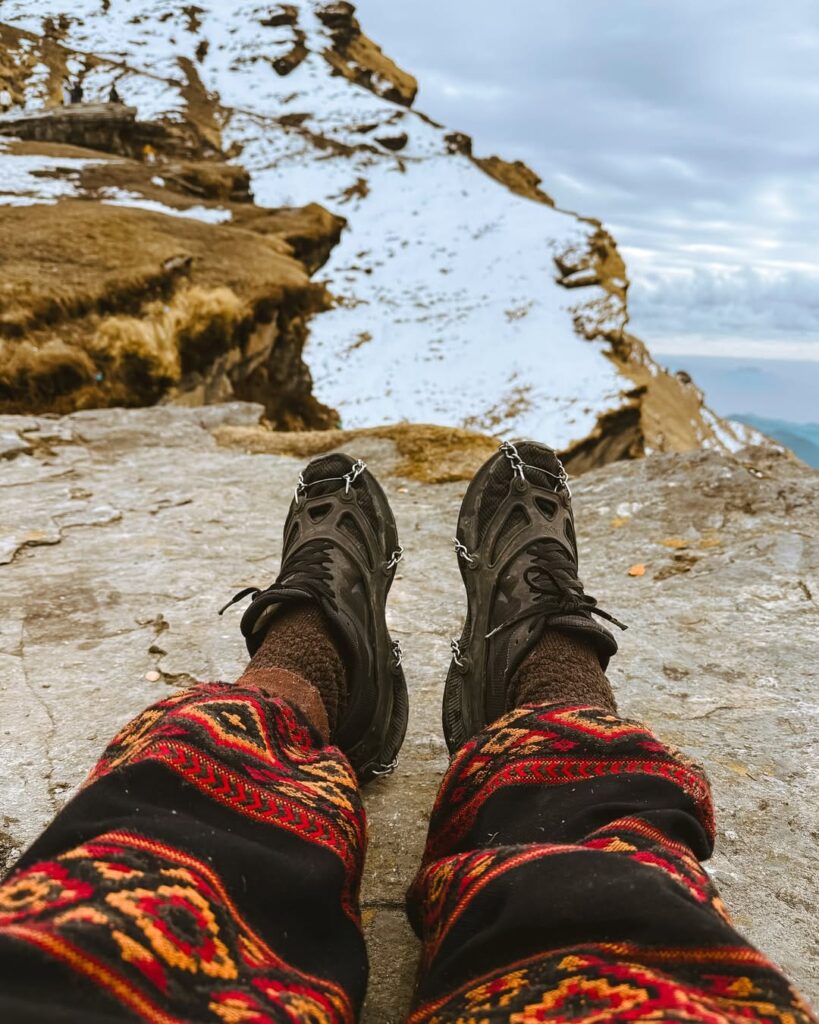
Adventure Activities to Do in Chopta in Winter
Chopta in winter is not just a scenic retreat—it’s an adventure playground wrapped in snow. With temperatures dropping below zero and landscapes turning pristine white, this quiet Himalayan hamlet becomes the perfect setting for thrilling cold-weather experiences. Whether you're a first-time explorer or a seasoned trekker, winter in Chopta offers something bold and unforgettable.
1. Snow Trekking to Tungnath & Chandrashila
The Chopta Tungnath trek transforms in winter. The path to the ancient Tungnath Temple is blanketed in snow, turning a regular trail into a white challenge. For those with stamina, continuing to Chandrashila summit gives you a rare, uninterrupted 270-degree view of Himalayan peaks—glowing in winter light.
2. Backcountry Hiking & Frozen Trails
Beyond the main trail, winter opens hidden routes through pine forests and frozen meadows. With snow crunching under your boots, these lesser-known paths offer true solitude and raw wilderness. You’ll often be the only human for miles.
3. Winter Camping in Snowy Meadows
Set up camp in locations like Baniya Kund or near Chopta forest line, where snow-draped trees surround your tent. Local operators provide insulated tents, bonfires, and warm food—turning your campsite into a peaceful, star-lit haven.
4. Snow Photography & Drone Scouting
Capture Himalayan winter in its full glory. Snow-dusted trails, frozen tree canopies, and crystal-clear skies offer incredible photography opportunities—especially during golden hours and moonlit nights.
5. Slope Slides & Ice Walks
Many open meadows become natural slopes—perfect for safe snow slides. Some treks also include stretches of packed ice, adding fun and technicality to your journey.
Adventure in Chopta during winter isn’t just about ticking off locations—it’s about embracing altitude, snow, and silence with a spirit of thrill.
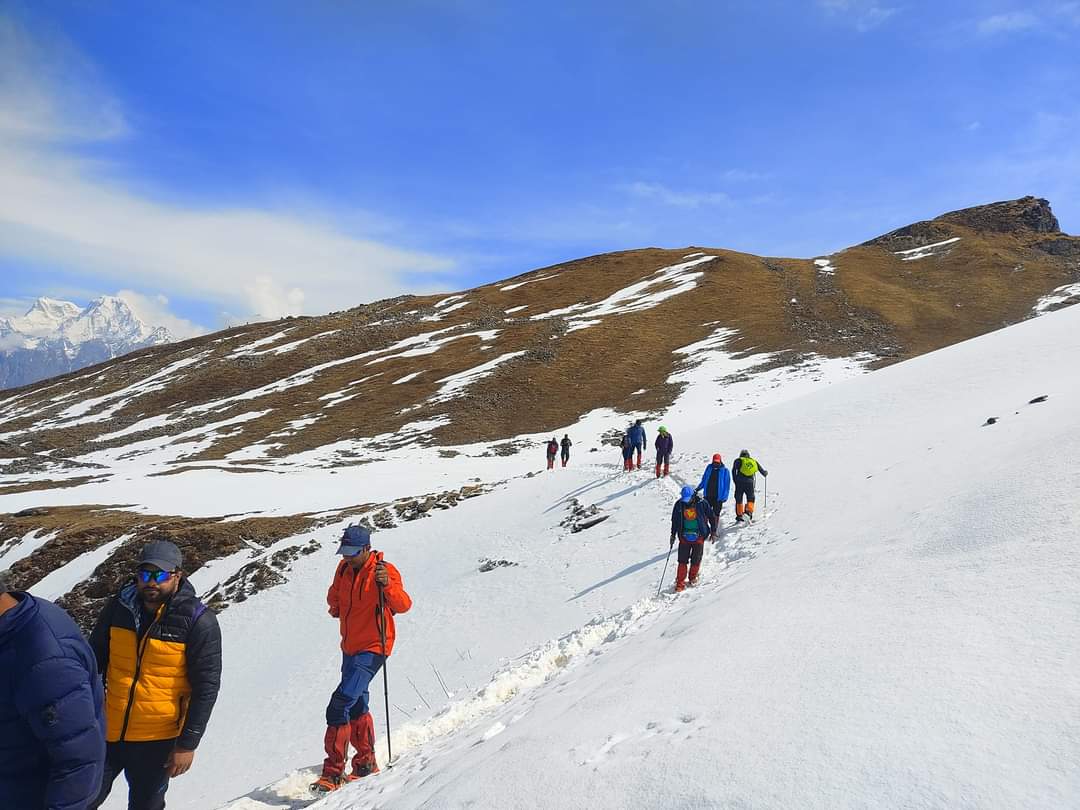
Design Your Dream Chopta Trek with TourMyHoliday
The Chopta Chandrashila trek from Delhi doesn’t need to follow a fixed script. At TourMyHoliday, we offer you the freedom to shape your Himalayan journey exactly the way you want it—personalized to match your comfort, pace, and travel goals.
Whether you’re a solo explorer, a couple looking for quiet mountain moments, a family seeking bonding time, or a group of friends chasing snowy peaks—we craft each trip to fit your vibe.
From smooth Delhi pickups and handpicked accommodations to local transfers, hearty meals, and guided hikes—we handle every detail. You can choose to stay in snug cottages, scenic tented camps, or affordable guesthouses. Want to add an extra day or two? No problem. Interested in visiting Deoria Tal, Ukhimath, or Sari Village? We’ll build them into your route.
Every TourMyHoliday Chopta tour package includes:
-
Skilled local guides for safe and enriching trekking experiences
-
Flexible itineraries tailored to your group type and schedule
-
On-ground coordination for a seamless trip
-
Complete focus on safety, comfort, and personalized service
Whether you're aiming for quiet forest walks or the thrill of summiting Chandrashila, we provide the options—you decide the journey.
Your Himalayan trek should reflect your spirit. Let’s make that happen.
Call us at 9990055699 to start building your custom trek.
Visit TourMyHoliday.com for detailed itineraries, traveler feedback, and flexible packages built around real mountain experiences.

Frequently asked questions about Chopta
What is the best time to book a Chopta tour package?
The best time to book a Chopta tour package is from March to June for pleasant weather and clear views, or December to February if you want to experience snow and winter trekking.
What does a typical Chopta tour package include?
Most Chopta tour packages include accommodation, meals, guided treks like the Tungnath Chandrashila trek, transport from Delhi or Rishikesh, and camping options.
Is the Chopta Tungnath Trek suitable for beginners?
Yes, the Chopta Tungnath trek is considered a beginner-friendly trail, with a well-paved path and moderate elevation gain, making it ideal for first-time trekkers.
How difficult is the Chandrashila Trek from Chopta?
The Chandrashila trek is a moderately easy hike from Tungnath Temple, but the final stretch to the Chandrashila summit trek is steep and may require some stamina.
How can I reach Chopta from Delhi?
You can reach Chopta from Delhi by train or bus to Rishikesh or Haridwar, then continue by road. You can also book a Chopta Tungnath trek from Delhi package with transportation included.
Are there any good Chopta Chandrashila trek from Delhi options available?
Yes, several travel operators offer Chopta Chandrashila trek from Delhi packages that cover transport, stays, and guided treks at affordable prices.
How long does the Tungnath Chandrashila trek from Delhi take?
A typical Tungnath Chandrashila trek from Delhi takes about 3 nights and 4 days, depending on your itinerary and the pace of your journey.
Is it safe to do the Tungnath Temple trek during winters?
Yes, the Tungnath Temple trek is safe in winter with proper gear, but the temple itself is closed after Diwali due to heavy snowfall.
Do I need permits for the Chandrashila trek?
No permits are required for the Chandrashila trek, but carrying a valid ID and registering at the base camps is often recommended.
What’s the altitude of the Chandrashila summit trek?
The Chandrashila summit trek reaches an elevation of about 13,000 feet (4,000 meters) and offers stunning panoramic views of Himalayan peaks.
What should I pack for the Chopta Tungnath trek?
Essentials include trekking shoes, warm layers, a raincoat, water bottle, flashlight, personal meds, and energy snacks. If traveling in winter, snow gear is a must.
Are there camping options in Chopta tour packages?
Yes, many Chopta tour packages include camping in Baniyakund or Chopta meadows, offering a magical experience under starry skies.
Can I do the Chopta Tungnath trek in a single day?
Yes, the Chopta Tungnath trek (around 3.5 km one way) can be completed in a single day, typically taking 3–4 hours to reach the temple and return.
Is the Chopta Chandrashila trek open year-round?
The Chopta Chandrashila trek is accessible most of the year, but heavy snow between January and March may block some trails temporarily.
Why is the Tungnath Temple trek so popular?
The Tungnath Temple trek is famous for being the highest Shiva temple in the world, scenic Himalayan landscapes, and its connection to the Panch Kedar pilgrimage.

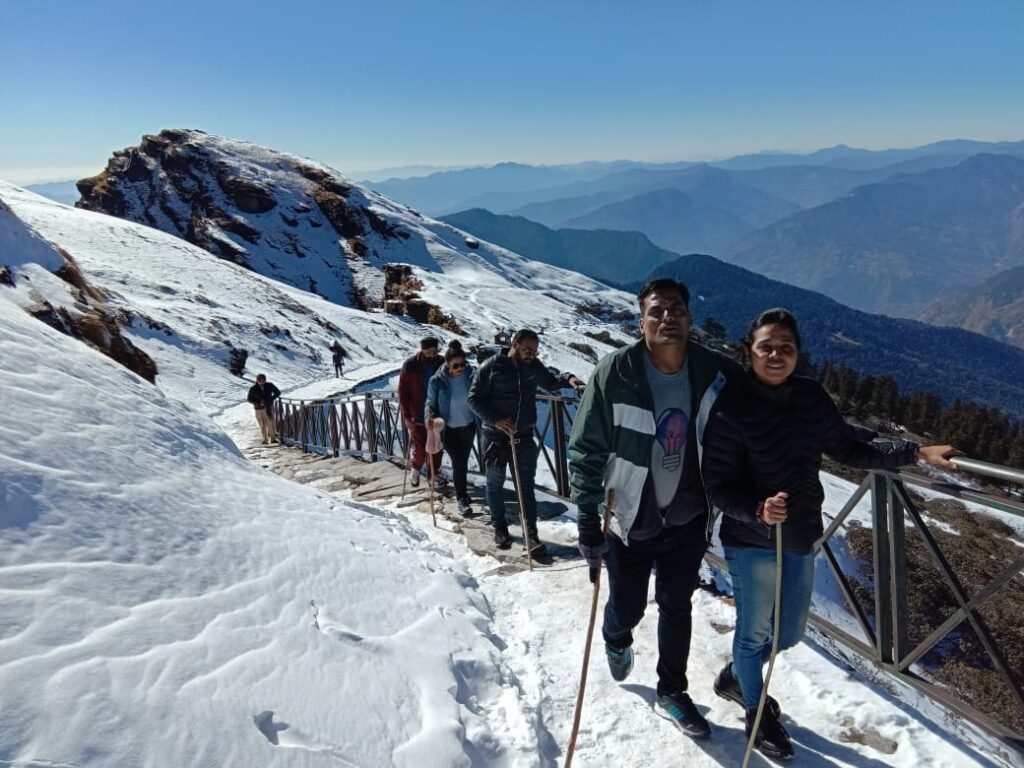

.jpg)
